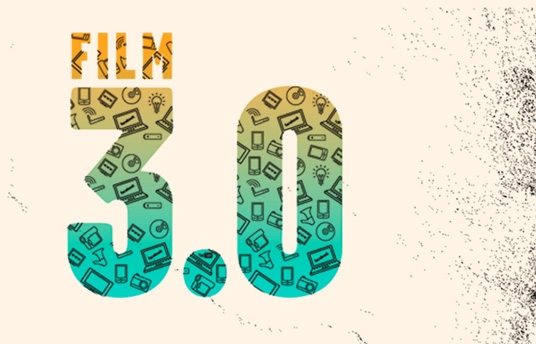فيلم 3.0 : التقاء التكنولوجيا بالأفلام
16 سبتمبر 2012

بقلم شامير علي بهائي
اعتاد صنّاع الأفلام المستقلون الإبداعيون استخدام وسائل أكثر إبداعاً وبذل مزيد من الجهد للحصول على تمويل أفلامهم وإنتاجها وتسويقها وتحقيق النجاح في هذه الصناعة. واليوم، يستمر السينمائيون في هذا العمل المتميز ليضيفوا إلى جهودهم استخدام الأساليب الإلكترونية عبر الإنترنت التي تؤثر على القطاع الكامل لصناعة الأفلام، من التمويل إلى التوزيع.
من 13 إلى 28 سبتمبر، سيكون 3.0 تحت الضوء هنا على الموقع الإلكتروني لمؤسسة الدوحة للأفلام ومواقع التواصل الإجتماعي، حيث نتطلع إلى مناقشة موضوع التقاء التكنولوجيا بالأفلام.
سوف ننظر إلى تمويل جماعي، وكيف يمكن أن نجمع كميات قليلة من المال من مجموعة كبيرة من الناس، وإلى التصوير السينمائي الرقمي والعملية المتواصلة للإنتاج مع كاميرات أصغر وأكثر كفاءة، التسويق عبر مواقع التواصل الإجتماعي وفرص بناء قاعدة جماهيرية وإشراكها، والتوزيع الرقمي وكيف يمكن ان تبيع الفيلم مباشرة إلى الجمهور بغض النظر عن الحدود الجغرافية.
يقوم صانع الفيلم المدعوم بالتكنولوجيا الرقمية بكسر القيود بعيداً عمن سيطر على هذه الصناعة في الماضي، كالدخول إلى السوق وحولت التوازن القوة بعيداً عن هوليوود إلى صناع الأفلام في جميع أنحاء العالم.
فيلم 1,0 كان خلال معظم فترات المئة عام الماضية من صناعة الأفلام الخيار الوحيد لصنع فيلم سينمائي. لنعد بالذاكرة إلى أفلام كوداك 35 ملم وسوبر 16 ملم التي سيطرت على انماط الأفلام، فقد احتاج صناع الأفلام عندها إلى معدات وأجهزة كبيرة، احتاجت بدورها إلى طاقم عمل ضخم أضف إلى ذلك كلفة الإنتاج العالية للفيلم (ولا تزال). كان من المحظور صنع فيلم وكنت تحتاج إلى دعم مالي حقيقي للإنتاج.
يمكن اعتبار فيلم 2,0 خطوة هائلة بعيداً عن الشريط السينمائي كوسيلة وحيدة للعرض. قلل هذا الامر من كلفة الإنتاج وزاد من قدرة صناع الأفلام على الوصول إلى جمهور أكبر. شهدت هذه المرحلة انطلاق الكاميرات التي تعتمد على الشريط وكاميرات الشريط الرقمية والكاميرات الرقمية بالكامل. وقد سادت وقتها اجواء الإرتياح على سير إنتاج وتطوير الفيلم، فتم تقليص عدد أفراد طاقم العمل والإستغناء عن كمية كبيرة من الميزانية. مع هذه التغييرات، قلصت فترة الإنتاج وما بعد الإنتاج، ما وفر المزيد من تكلفة العمال (مع التخزين الرخيص، قام صناع الأفلام بتصوير المزيد والمزيد). في فترة التسعينات والألفية الجديدة انتقل ما بعد الإنتاج إلى النمط الرقمي، الأمر الذي وفّر على صناع الأفلام المزيد من الأموال ومنحهم المرونة وقدرة استخدام أدوات حديثة.
ولكن لوقت طويل، لم تتغير العديد من العناصر التجارية الأخرى لصناعة الأفلام. فلا زلت تحتاج إلى وسيط مثل وكيل مبيعات وموزع لتطلق فيلمك إلى العالمية. لا يزال التسويق في أغلب أجزائه يكلف الكثير من المال نتيجة الإعلانات التقليدية على الإذاعة والتلفزيون والمطبوعات.
فيلم 3,0 هو التطبيق الواقعي للكفاءات زالقدرات التي وفرتها التكنولوجيا لصناع الأفلام المستقلين وفي كافة المجالات الرئيسية. فكامل العملية السينمائية باتت أكثر سهولة: تمويل فيلمك وإنتاجه وتسويقه وتوزيعه إلى أكبر شريحة من الناس. وأصبحت النزعة الجديدة القائمة على مفهوم “أصنع فيلمك بنفسك” هي المسيطرة ونقلت الصناعة إلى مستوى آخر.
لا تسيئوا فهمي: التكنولوجيا لن تطور نصاً سيئاً، أو تمثيلاً ضعيفاً، أو إخراجاً هزيلاً أو تنتج فيلماً سيئاً. لكلنك إذا حصلت على ضروريات العناصر الإبداعية الصحيحة، سيكون لديك فرصة أفضل لإنتاج فيلمك المستقل وتوزيعه بين الناس، وهذا عنصر رئيسي لخلق مسيرة مهنية مستدامة في هذه الصناعة.
لا يزال هناك تحديات رئيسية يجب ان نواجهها، خصوصاً بالنسبة لصناع الأفلام العرب في تسويق أفلامهم في الشرق الأوسط. تتضمن التحديات الولوج إلى الإنترنت، سرعة الإنترنت ذات النطاق العريض، والتوزيع التجاري الإلكتروني. وأصبح لجميع صناع الأفلام المزيد من الوسائل لمشاهدة فيلمهم، لأنه من الأسهل للجمهور اكتشاف ومشاهدة الفيلم عبر الإنترنت. ومع ان عدد ساعات اليوم لم تزد، يبدو ان الجمهور لم يعد يخصص أي منها للترفيه ذات الفترة الطويلة.
لكنّ صناع الأفلام يتأقلمون وصناع الأفلام الجدد يدخلون الموجة وهم شغوفين لإخبار قصتهم لتحظى بنسبة مشاهدة وتوزيع عالية.
نأمل أن تنضموا إلينا في الأسبوعين المقبلين، وتشاركونا تجاربكم في أفلامكم 3,0 الخاصة، تسألون وتناقشون. إذا كنتم في قطر، انضموا إلينا للحديث عن صنع فيلم خلال 48 ساعة، حيث يمكنكم صنع فيلم خلال عطلة نهاية الأسبوع لتمضوا باقي الأسبوع في تسويقه إلكترونياً.
الإبداع والمثابرة والإبتكار، ستبقى صفات ملازمة لصانع الأفلام المستقل. ويسرنا جمعها مع التكنولوجيا لفتح المزيد من الأبواب وإتاحة المجال لمزيد من الجمهور للدخول إلى قصصهم الجريئة والحكيمة وغير التقليدية.